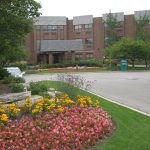Changes to HUD Section 232 funding which came into effect in January of 2017 have made it possible for more senior living owners to access HUD funding. In fact, even some non-owner/operators and applicants who have been previously denied HUD funding have been able to qualify under the new regulations. In the nearly two years that the updated regulations have been in effect, Cambridge Realty Capital President Jeffrey Davis has seen the results firsthand. “We’ve seen applicants who wouldn’t have qualified under the old regulations, like board and care facility owners, obtaining HUD funding for refinancing and for new construction.”
The changes that were implemented affected three major criteria: borrower seasoning, IOI relationships and partner buyouts, and owner versus operator borrowing.
Borrower Seasoning
Prior to 2017, the seasoning requirement for borrowers was two years for the HUD takeout of interim or bridge loans in cases where equity is returned to the borrower. Two-year seasoning is still required in cases where the loan-to-value is greater than 70%. However, for borrowers with a loan-to-value less than 70%, HUD may waive the two-year seasoning requirement as long as leverage standards can be maintained. To qualify, HUD requires a third-party appraisal and three or more years of stabilized historical cash flow to support the value.
Operator Debt Options
Previously, only the real estate owning entity’s costs and liabilities were considered eligible items that could be included in the HUD loan. Consequently, certain costs and liabilities the operator entity may have incurred could not be included in the HUD loan when the real estate owner and operator were related parties.
This all changed under the new regulations. Now, operators who are a related party to the real estate owner may include certain costs and liabilities that HUD has deemed eligible to be included in the new HUD loan. Liabilities and costs the operator may have incurred that would now qualify include costs related to the purchase of additional furniture fixtures and equipment, working capital related to the lease-up and stabilization of the project, and capital expenditures.
IOI Relationships/Partner Buyouts
Under the old regulations, IOI relationships were a strike against a HUD loan applicant, as was a partner buyout situation. Since these regulations have been relaxed, other circumstances, such as the terms of existing buyback provisions, will be considered on a case-by-case basis.
The Future of Senior Housing Under the New Regulations
In addition to seeing more board and care facilities qualifying for HUD funding, Davis expects to see more HUD funding being granted for new construction of skilled nursing facilities, assisted living facilities and board and care facilities. With the 65 and older population on the increase thanks to the wave of baby boomers reaching their senior years, “new construction will be needed to meet the growing demand for housing and health care for this population,” adding, “the time has never been better to apply for HUD funding.” HUD Section 232 loans sit currently at a fixed rate of approximately 4.5%, with terms that range from 30 to 40 years. Loans are self-amortizing with no balloon.
For senior living owners and operators, Davis has this advice: “There are a lot of compelling reasons to consider, or reconsider, HUD funding. Even if you tried in the past and were denied, or you didn’t think you qualified under the old parameters, HUD funding is well-worth looking into under the current standards.”




